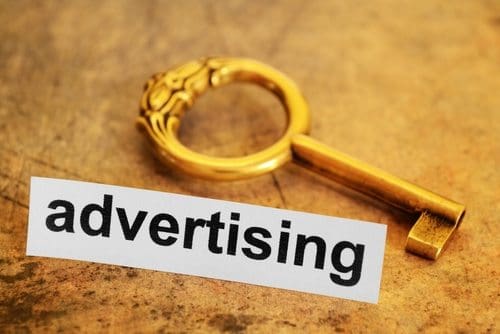Writing your name/your company’s name as the ad headline.
To be honest, unless you’re MacDonald’s or Microsoft, no one except your mum is really interested in your name. Every potential customer’s favourite radio station is WII FM – What’s In It For Me – so they only care about what you can do for them.The headline is the most important part of the whole ad because it’s the bit that gets people’s attention. It should reach out to tell them and say why they should come to you. And in order to really speak to your prospect, try to include ‘You’ or ‘Yours’ in the headline – eg: Is Your Conservatory Too Noisy When It Rains? Asking a question is a good tactic too, because questions are always answered, aren’t they?
Size wise the headline needs to fill about 1/3 of the space you have to fill. Make sure no one can miss it.
Not Knowing Who Your Potential Customers Are. You’d think the answer’s obvious – ‘everyone is my customer’. So who is your ideal customer? Think about where they live, are they male or female, what age, what size of company they have, what kind of car they drive and what newspapers and magazines they read. Answers to these questions (and more) give you a profile of the kind of person you want to attract, as well as how you’ll speak to them – the sort of language you’ll use – and where you might place your ad.
Selling on features not benefits. Features are the list of things your product or service does – eg, silences rain noise, heat insulation, cuts out glare, are 3 for a conservatory roof covering. But remember the customer is only interested in what those features mean to him/her and the answer is that they solve his/her problem. Your ad needs to show how. To change a feature into a benefit, just add the words ‘which means that’ or similar.
Making your ad the same as everyone else’s. Take a look in Yellow Pages or another directory and pretend you are a prospect for a particular product or service (you’re not a customer until you’ve bought something). What would make you pick one company and not another? Now look at your ad if you have one in a directory; what makes you stand out from the crowd?
Selling on the price not the value. There are some products or parts of a service that are price sensitive, but not everything. You know your business so you know what these are, but being the cheapest isn’t the same as being the best. Often if a customer hears a cheaper price than he expects he may think he’s getting sub-standard service.
Instead of advertising a discount (where you loose money if you’re not selling at the full mark-up cost), offer a ‘free’ gift with purchases. This is something that is of value to the customer but of low cost to you. For example, a carpet cleaning company could offer to shampoo a bedroom carpet for free (value £X if done when the offer’s not on) when the hall, stairs and landing are done. This sort of thing is of little extra cost in time as you’re in the house anyway, no extra petrol or travelling, and the customer feels she’s getting great value for money.
Not testing and measuring your ad. If you place an ad in one of the big directories for a year it can cost a fortune. And if you don’t ask people where they heard about you from, how will you know whether your ad was an investment (giving you back more in sales than it cost)?
Also, if you’re running several different ads, you need to know which is working well so you can use it more than the ones that aren’t. Testing and measuring are easy to do – just make a tick list of options (including ‘just walking by the shop’ if it’s appropriate) and put a reminder on the till for staff or on the telephone order sheet.
Not having a call to action in your ad. Your potential customer needs to be told exactly what to and when to do it – don’t trust that he will call you at some point because he’ll forget or a better offer will come along.
A call to action comes at the bottom of your ad, next to the telephone number/ address and tells Mr Prospect to call right now. Create urgency by making a limited offer or encouraging him to let you solve his problem – noise on the conservatory roof, dirty carpets, and embarrassingly scruffy drive way.
Make it really easy for the person to do what you want him to do: include a map or directions to the shop, a free-phone number or web-based ordering. After all the whole point of advertising is getting a prospect to do something that they probably wouldn’t have done if they hadn’t seen your ad.


